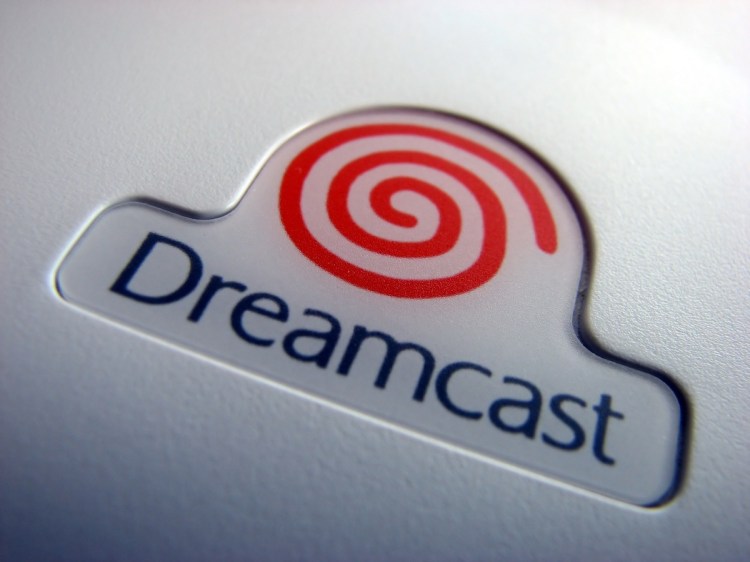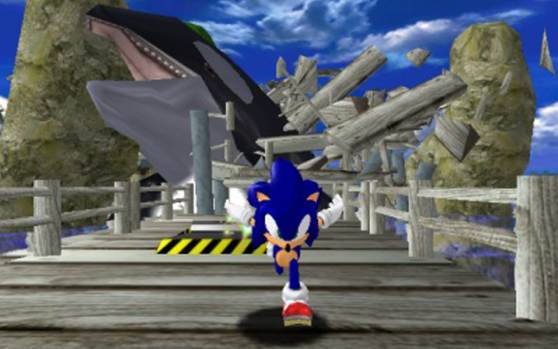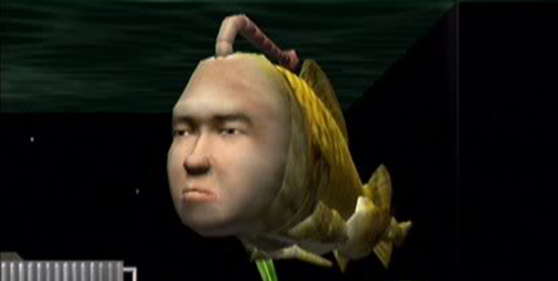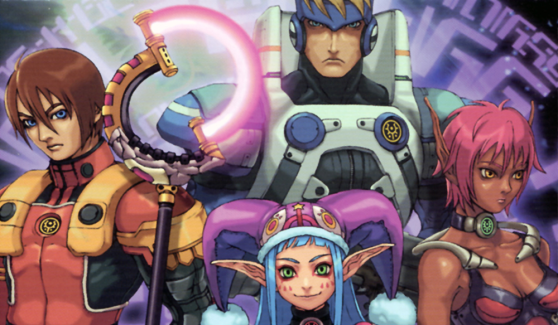Perfecting my runs in Sonic Adventure
The Dreamcast ignited my love affair with fighting games, and thanks to it (and my big brother) I was able to play arcade classics like Street Fighter III: 3rd Strike, Project Justice, Power Stone, and Fatal Fury: Mark of the Wolves.
So let’s talk about Sonic the Hedgehog.
Until the Dreamcast, I was firmly in the Nintendo camp. I watched the Sonic cartoons and read the comics, but I only got to play the Genesis games much later. Sonic Adventure 1 and 2 were the first ones I played roughly when they came out. The hedgehog’s 3D journeys are more about maintaining your flow than straight-up platforming: Find the best routes, avoid crashing into random enemies, get the high score. And you have a voice inside you that says, “Always keep on running!”
The first level of Adventure, Emerald Coast, encapsulates that mantra as you whisk through beach walks, hurtle across mossy cliffs, and outrun a killer whale. This stage, along with Speed Highway and Lost World, are the game’s best when it comes to establishing and maintaining a fast pace while slamming you with then-fantastic graphics. The sequel built upon that concept by adding rails to grind on and removing the first entry’s charge requirement for the Light Speed Dash.
Sadly, when I recently replayed the first Sonic Adventure, the now-infamous bad camera angles and frustrating random deaths became a determent to my fun. And I’m not quite as fond of my memories of fishing as Big the Cat or completing 10-minute treasure hunts as Knuckles the Echidna. So why reminisce about those titles rather than the fighting games I mentioned above? I can have fun with those brawlers even today, while the joy of playing Sonic may be something I can’t revisit. If I pop those disks back into the system and turn on the power button, I could lose those moments to time, like tears in the rain.
– Chris Hoadley, contributing writer and moderator
When Seaman deduced my political affiliation
“Based on what you’ve said, I would guess you are a Demo-o-crat.”
It was the fall of 2000, a few months before George W. Bush became the 43rd President, so the fact that I was talking politics with someone wasn’t that unusual. Or rather, it wouldn’t have been if the “someone” wasn’t a fish with a human face and a close, personal relationship with actor Leonard Nimoy.
Released on August 9, 2000 for the Dreamcast, the Sega virtual-pet simulation Seaman didn’t just let you take care of a computerized dog or cat. Instead, it tasked you with looking after a fishman who, over time, evolved into a lizardman and then, if you did it right, an escaped convict. They even got Mr. Spock to explain it all.
But along with feeding him, you also used a special mic plugged into the Dreamcast’s controller to talk to Seaman. And not only was he rather inquisitive, but he also used what he learned to ask better and more probing questions. Which is how we got to talking about politics in the first place, and thus how he ultimately figured out that I was, as he carefully pronounced it, a “Demo-o-crat.” (To which I replied, incredulously, “I’m sorry!?!”)
Eventually, our conversation evolved into different realms, just as Seaman evolved legs and ultimately figured out how to get out of his cage. I don’t know what ever happened to him — Sega never released Seaman 2 in the U.S. — but I like to think that he’s out there, somewhere, holding a clipboard and standing in front of a supermarket, asking shoppers if he can have a moment of their time to ask them some questions.
– Paul Semel, contributing writer
The only perfect score I’ve ever handed out
Sega’s console represents a landmark in my writing career. The Japanese version of the Dreamcast launched a little bit after I started to get a significant foot in the game-industry door. By the time I had graduated to a media position, to the chagrin of my then-managing editor Dan “Shoe” Hsu (I can only imagine dealing with the young, punk-ass version of myself), the console had launched and was rolling into its first year. As I said, there were a lot of firsts for me surrounding the Sega Dreamcast, including this one: reviewing the perfect game.
The boss knew I was anxious to try this title out. Every time a preview beta would land on another writer’s desk, I immediately set up a chair right behind them to backseat play them into frustration. So when the review copies of the Japanese beta arrived in Shoe’s mailbox, he assigned me to the lead article. Joining me were my two colleagues: Christian Nutt and Shane Bettenhausen.
The game in question? Phantasy Star Online.
We went into the world’s first console-based online role-playing game expecting a spectacular flop of some kind. After all, this is the first of its species. You just don’t get such a massive concept as online console gaming correct the first time. I was expecting something functional, at best.
Four hours later, Christian, Shane, and I turned off our Dreamcasts, and we reflected in silence for a few minutes. I had just had the most enjoyable co-operative gaming experience of my life. I suddenly dreaded writing the review.
We were in an era where critics admitting to finding no faults in a title opened themselves up to extreme scrutiny — unlike today, where the Internet eats you alive if you rate anything under a 9 out of 10. Yet there was Phantasy Star Online, challenging me to find something wrong. It shocked the jaded and obnoxious version of my younger self.
It is one of those games that, for its time, was flawless. Every issue that I could think of that an online console RPG would face, it solved. The pacing of each individual section was just right, so players who wanted to do a quick session with their friends after work weren’t playing until midnight. The game handled communication between players visually through quick, shorthand emoticons that didn’t require fumbling with a keyboard. The four-player cap kept parties small and manageable. Developer Sonic Team designed the environments to be extremely small and tight, but the art direction gave off a sense of mass. Timed combo attacks broke up the monotony of hitting an attack button over and over again (an issue with the then-reigning Diablo series). The enemy encounters were dynamic, and the class design allowed everyone to have an important job no matter what combination of players you had.
Everything solved very specific development and gameplay challenges in intelligent and clever ways. In fact, some of these solutions laid the foundation of our modern online console games. We owe a lot to the things the Phantasy Star Online development team tested out.
As for the article, I’m not sure what I actually wrote in that review. Honestly, I don’t want to remember because my ability to explain gameplay at the time likely comes off like gibberish. I do know that I slapped a 10 out of 10 on that thing. Shoe grilled me hard on that rating. He wanted me to be absolutely sure that I knew what a 10 meant. I was putting not just my reputation on the line but the entire editorial staff’s as well. But I would’ve bought two more Dreamcasts just to play this game at home, and if that’s not a clear sign of something special, then I don’t know what is.
The day the review went live, the entire editorial team was laid off (for budget reasons). Other outlets handed Phantasy Star Online 6s, 7s, and 8s. The fact that I didn’t align with popular opinion didn’t bother me anymore; I was glad to have gotten the rare chance to reward a truly great game with a perfect score before being ejected out of the games media. To this day, I wonder and hope that someone saw that perfect score, bought the game, and had their minds blown.
– Stephen Kleckner, contributing writer
VentureBeat's mission is to be a digital town square for technical decision-makers to gain knowledge about transformative enterprise technology and transact. Learn More





